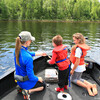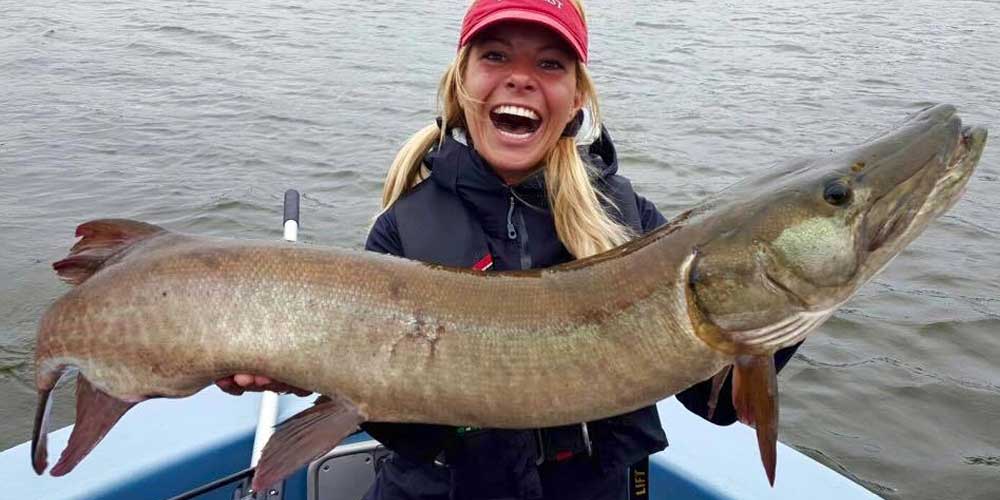
Dive and Rise Muskies
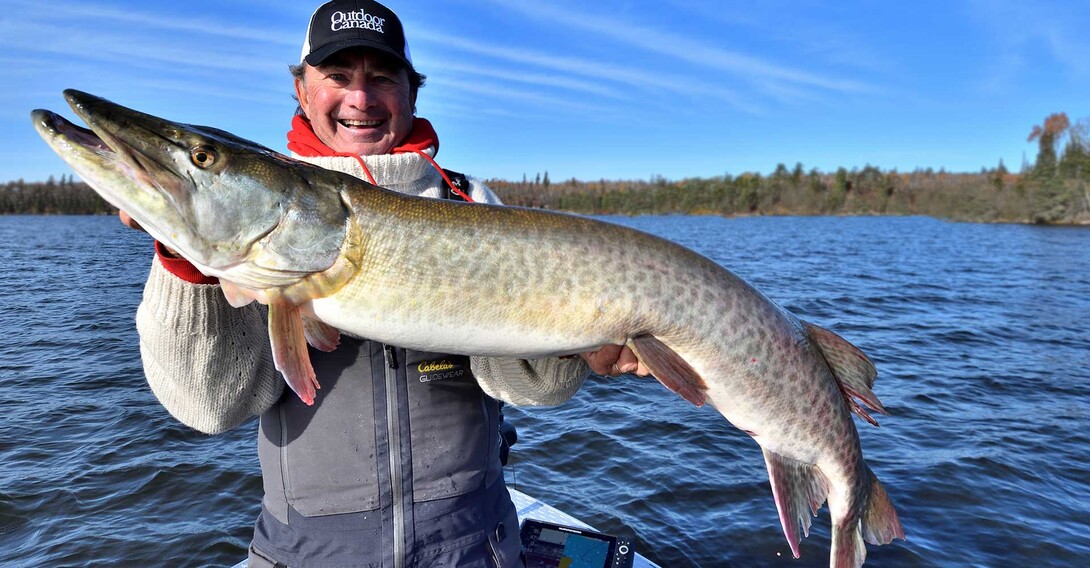
Ontario offers the finest muskie fishing on Earth and there is no better time to catch the trophy of a lifetime than the next two months. It is all about the big toothy critters’ summer home ranges breaking down and their fall territories coming into play. And if you talk to seasoned pros, like Lisa Goodier, one of the renowned Ottawa River Musky Factory guides or Chris Huskilson, the Product Specialist for Peterborough Pro Tackle, you will hear two phrases repeated constantly….dive and rise and pull and pause.
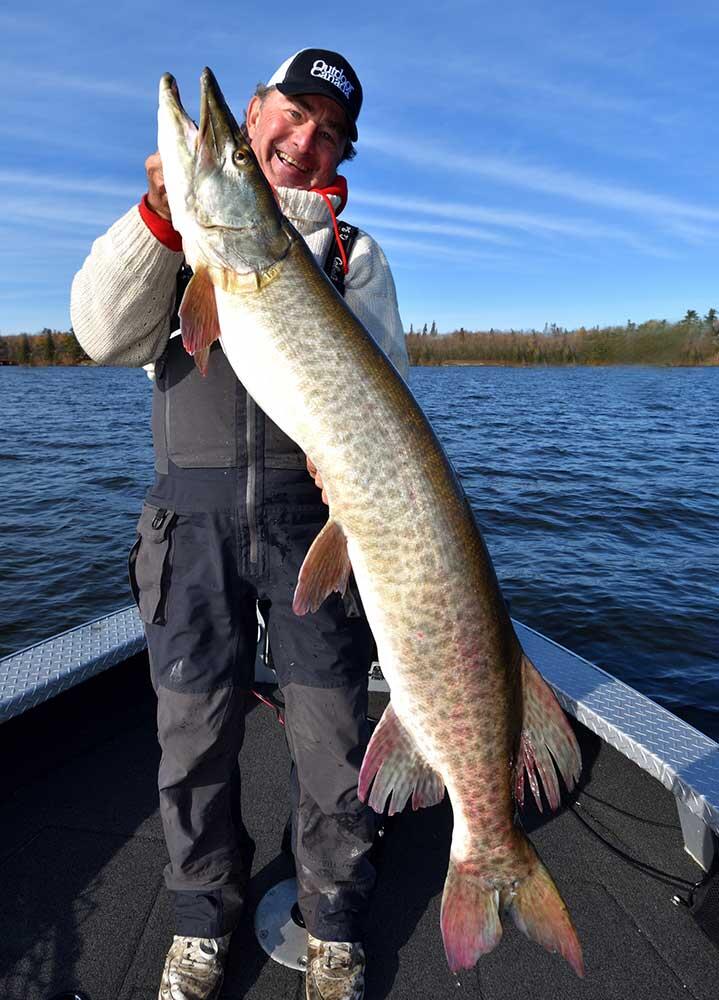
(Photo credit: Gord Pyzer)
“If I could only take one lure with me on a fall muskie trip,” says Goodier, “it would be a 14-inch Frankensuick. It has an adjustable weighting system that lets you switch from 6.7- to 11 ounces. You can also fine-tune the running depth by bending the metal tail. When you do this you can work the lure over shallow weeds or get it down five or six feet in the water column. The dive and rise action imitates an injured or dying baitfish and the hang time gets the big muskies excited.”
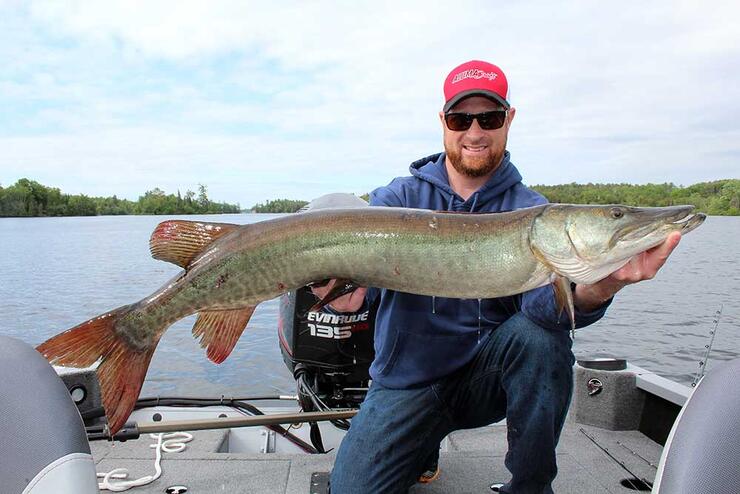
Chris Hulkinson opts for large tube jigs when the water temperature dips in the fall. (Photo credit: Chris Huskilson )
Huskilson, on the other hand, opts for big 10- and 12-inch Red October Monster tube jigs to smack knee-knocking muskies. And he concentrates his time on the water to the afternoon hours, when the big bite window often opens up widely.
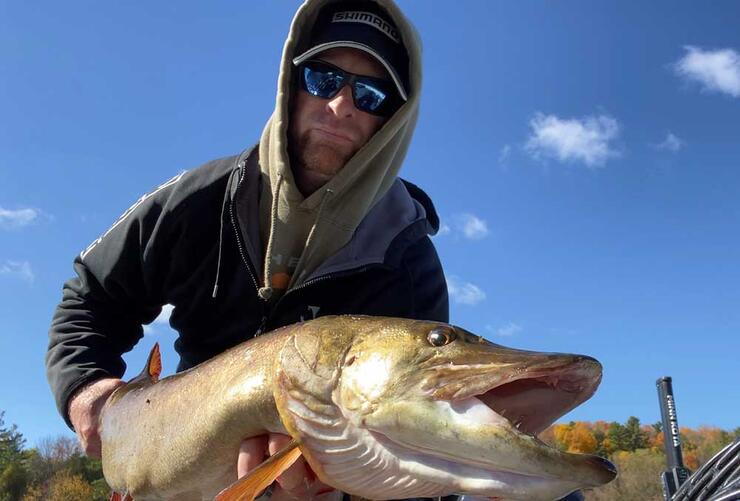
To get the erratic pull and pause gliding action that is so successful, Huskilson says a long powerful muskie rod is essential.
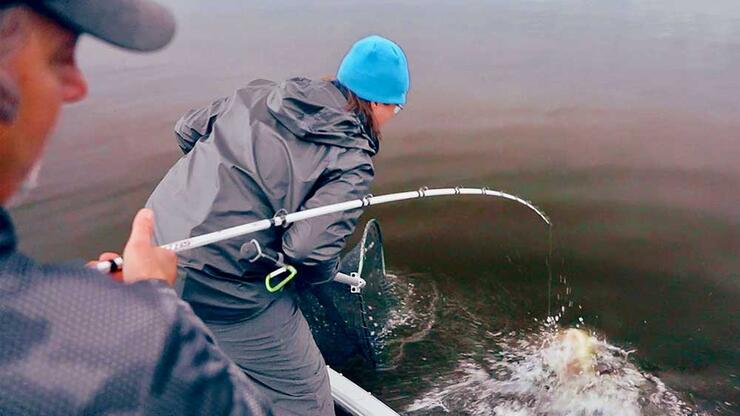
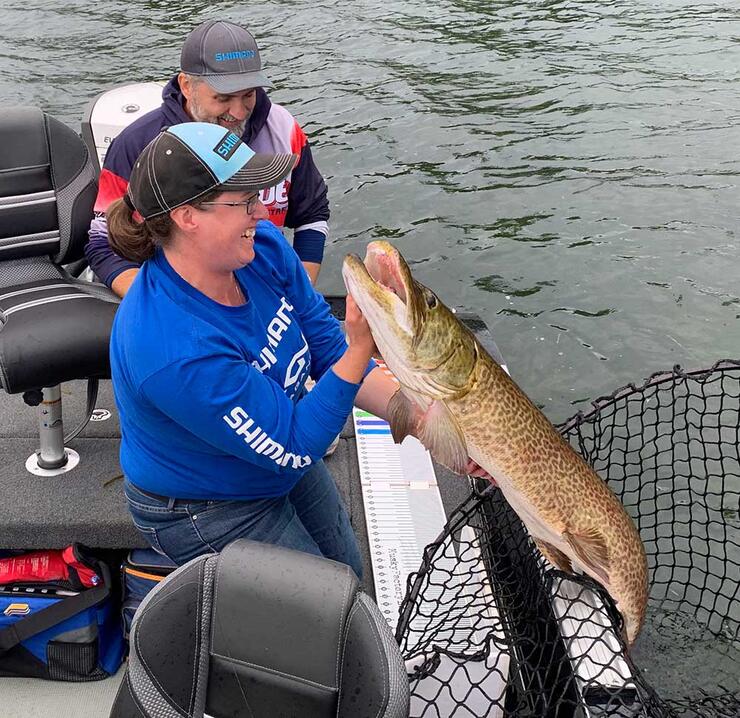
Muskie guide, Lisa Goodier instructs her guests to always keep their rods in position to make a powerful sideways hookset. (Photo credit: Mike Spratt )
Goodier, too, opts for a stout muskie stick in the fall, picking an extra heavy action 9-foot Shimano Compre as her weapon of choice. But she keeps two reels in the boat, a 400 regular series Tranx and a high-speed version spooled with 80-pound test Power Pro.
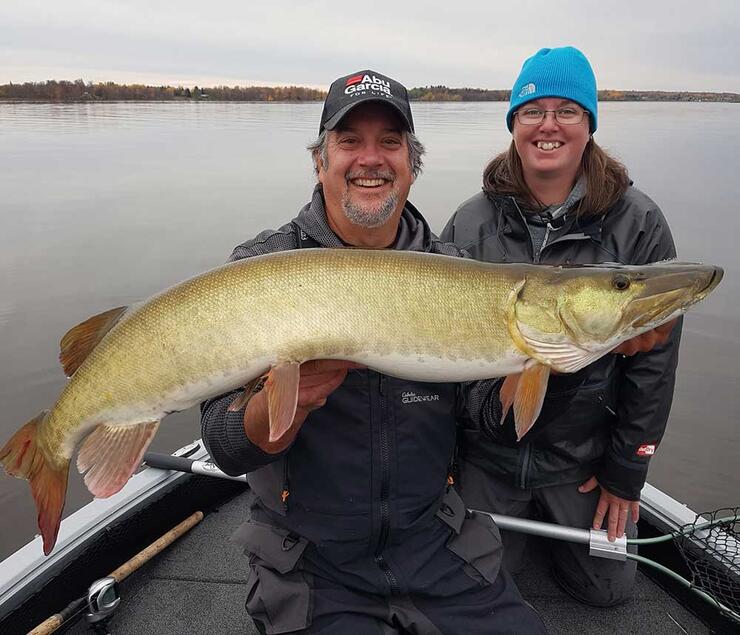
(Photo credit: Daniel Notarianni )
When I ask the two pros to give me a final fall tip to land the biggest fish of your life, Goodier says always keep your rod positioned for a good hook set. "I often see people with their rod tip near the windshield,” she chuckles.
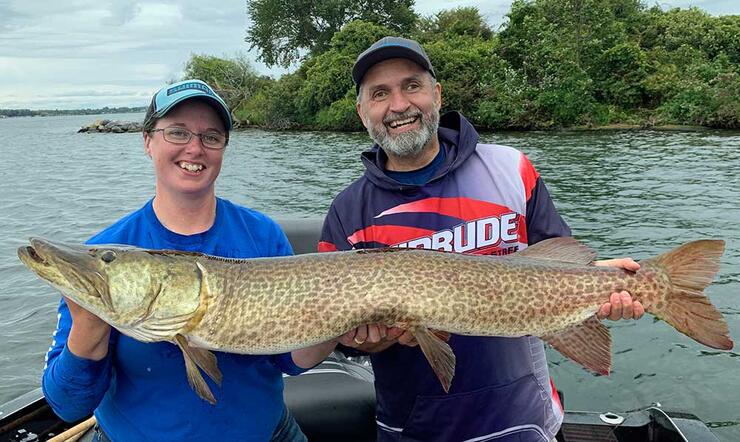
(Photo credit: Mike Spratt )
“The best suggestion I can give,” says Huskilson, “is to always hit your tube on slackline while you are twitching it back to the boat. Fish it the same way you would a jerk bait or a walk-the-dog-style topwater for smallmouth. If you don’t hit it on a slackline, you’ll greatly limit the hang time and erratic action. I throw a lot of big rubber in the fall and nothing produces the numbers and size of fish for me like a tube. It’s a mainstay on my boat.”
Now, repeat after me: dive and rise and pull and pause.
Recommended Articles

Top 5 Flies for Smallmouth Bass

5 Places to Shore Fish
Fishing and Foraging

Lake of the Woods
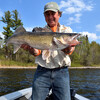
Take your tackle box to the next level

Spring Perch Fishing
Ontario Brook Trout
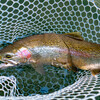
Equipment that's NOT Fly Fishing Related
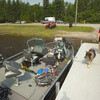
Top Drive-To Walleyes
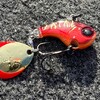
Wag Your Tail For More Walleye, Bass and Trout
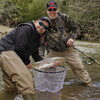
Steelhead of the Upper Ganaraska

Top 5 Baits for Smallmouth and Largemouth Bass

3 Great Ontario Walleye Destinations
Five Brook Trout Flies
Don’t Be Afraid Of Muskies
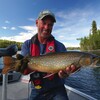
Summer Brook Trout
Awesome Algonquin

Eating Northern Pike

Terrestrial Flies for Brook Trout
